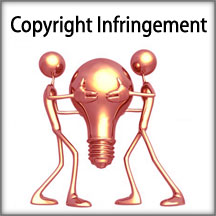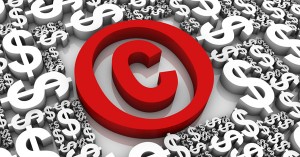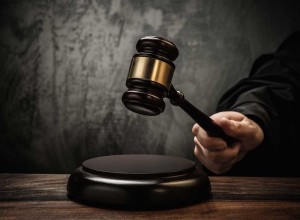In this blog post, Shubham Khunteta, a student of National Law University Odisha, Cuttack, who is currently pursuing a Diploma in Entrepreneurship Administration and Business Laws from NUJS, Kolkata, writes about the remedies available to a person for the infringement of his copyright.
Introduction on the need to prevent infringement of copyrights
The fundamental object of the copyright law is to energize creators, arrangers, and specialists to do unique works by remunerating them with a select good fit for a predefined period to recreate the works for distribution and offering them to public.
The law in this manner endeavors to prevent one from appropriating to himself what has been created by the works, aptitude, and capital of another. The copyright law is concerned with the negative right of avoiding replicating of physical material existing in the field of writing and craftsmanship.
The two essential schools of thought for copyright are the European framework translating copyright as Moral Right and the American framework keeping copyright as an Economic Right. Copyright as monetary right implies that copyright insurances are expected to empower development by securing what is legitimately the property of the maker in light of his work and “imaginative start” and is in this manner concerned more with adjusting the privileges of makers with business sector access[1].
Then again, Copyright as Moral Right view the work as being somehow an augmentation of the maker’s self and consequently sees a requirement for more far-reaching insurances. This distinction, for the most part, speaks to the contrast between the American (monetary) support and the European (good) defenses and is very much delineated by the varying methodologies of the United States and the European Union to the topic of securing privileges of the creators.
The teaching of Moral Right (every now and again found in French as Droit assurance), which is the basic premise of European school, is an altogether more extensive development of copyright. While financial rights can be purchased and sold, and are associated with the “work” as an item, moral rights are seen as something naturally controlled by the “writer” of the “works” due to his “virtuoso.” As one-course book phrases it, the ethical privileges of writers with deference to their works are understood as “basic, normal rights, emerging from an origination of the work as an expansion of the creator’s identity.[2]
Market financial aspects perceives licensed innovation as a public good which is:
(1) Non-excludable; and
(2) Non-rivalrous, implying that more than one individual can appreciate the property without barring each other from its advantages. Copyrights, however restraining infrastructures for a timeframe, are in this way endured in light of the fact that creators and designers would, seemingly, have no business sector motivating force to make truant the privilege to bar others from their works.
There has for some time been an open deliberation in the United States about whether one ought to hold all the more nearly to John Locke’s perspective of property as an unending right in personhood, which is a result of one’s blending his/her work with nature.
To be sure, numerous changes to copyright laws have been made that convey the United States nearer to European models
Remedies available against Infringement of copyright
Intellectual property rights are enforced by an action for infringement of those rights before the District Court or High Court. There are three kinds of remedies against infringement of copyright, namely:
-
Civil Remedies[4]:
This includes the injunction, damages, and an account of profits. A suit or other common procedures identifying with infringement of Copyright can be recorded in the District Court having a ward.”
The time of constraint for documenting of a suit for harms for infringement first of Copyright is three years from the date of infringement”. Section 5 read with Section 54 gives that an exclusive licensee can likewise document a suit for infringement. Be that as it may, where the suit is established by the exclusive licensee, unless the court coordinates, the proprietor of the copyright must be made as a respondent, and when such proprietor is made a litigant, he will have the privilege to question the case of the exclusive licensee.
-
Injunction[5]:
The essential cure looked for in most copyright suits is an order to control the respondent from keeping on doing acts which constitute infringement. The law relating to infringements is contained in Specific Relief Act, 1963.
-
Damages for infringement:
The proprietor of the copyright in a work is in the title to recuperate the harms for the misfortune or harm costs him by the infringement of the copyright. Get it is no arrangement in the represents the recompense of extra harms in exceptional circumstances, for example, the egregiousness of the infringement.
The Act additionally announces that all infringing duplicates of any work in which copyright subsists and all plates utilized or planned to be utilized for the creation of such duplicates should be considered to be the property of the proprietor of the copyright. It then qualifies him for taking procedures for the recuperation of ownership of the infringing duplicates and plates or in appreciation of the transformation thereof.
-
Remedy by way of accounts:
The plaintiff is also entitled to require the defendant to account for the profits made by him by his piracy instead of claiming damages for infringement or conversion.
-
Criminal Remedies:
This includes imprisonment and heavy fine and seizure of infringing copies of the work, which will be delivered to the copyright owner.
-
Administrative Remedies[6]:
This comprises of moving the Registrar of Copyrights to boycott the import of infringing duplicates into India when the infringement is by a method for such importation and conveyance of the reallocated infringing duplicates of the proprietor of the copyright and looking for the conveyance.
A compelling and speedy cure is made accessible by the Act to avoid importation into India the duplicates of a marketing specialist work made outside India, which is made in India, would encroach on copyright in the work.
Section 53 of the Copyright Act engages the Registrar of Copyrights in making a request precluding the importation into India of such duplicates for the utilization of the proprietor of the copyright in any work, party his obligation authorized agent in the wake of making such request as he esteems.
Footnotes:
[1] <http://shodhganga.inflibnet.ac.in/bitstream/10603/33710/3/chapter3.pdf>accessed on 30/08/2016
[2] <https://www.icsi.edu/Docs/Website/EconomicandCommercial%20Laws.pdf>accessed on 30/08/2016
[3]< http://shodhganga.inflibnet.ac.in/bitstream/10603/33710/3/chapter3.pdf>accessed on 29/08/2016
[4] <http://blog.ipleaders.in/remedies-available-copyright-infringement-india/>accesed on 30/8/2016
[5]http://www.mondaq.com/india/x/444510/Trademark/IPR+Criminal+Remedies+In+India+Civil+vs+Criminal+Remedy+In+IPR+Search+Seizure+Raids+By+Police>accessed on 29/08/2016
[6] <http://www.ssrana.in/Intellectual%20Property/IP-Enforcement-And-Litigation/Administrative-Remedies-in-India.aspx>accessed on 29/08/2016
 Serato DJ Crack 2025Serato DJ PRO Crack
Serato DJ Crack 2025Serato DJ PRO Crack













 Allow notifications
Allow notifications



